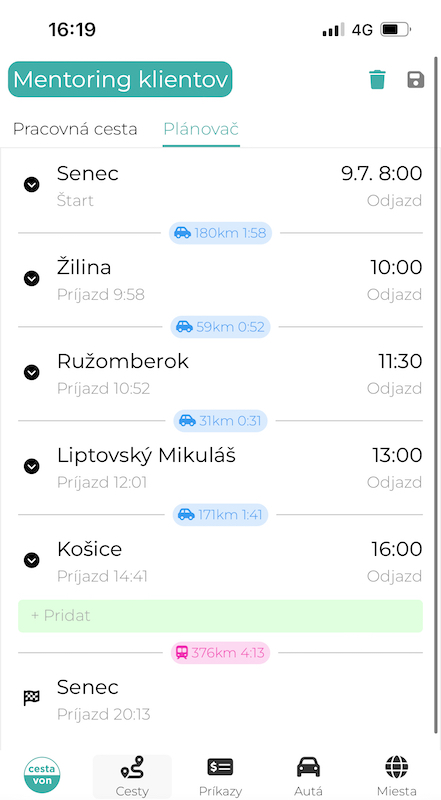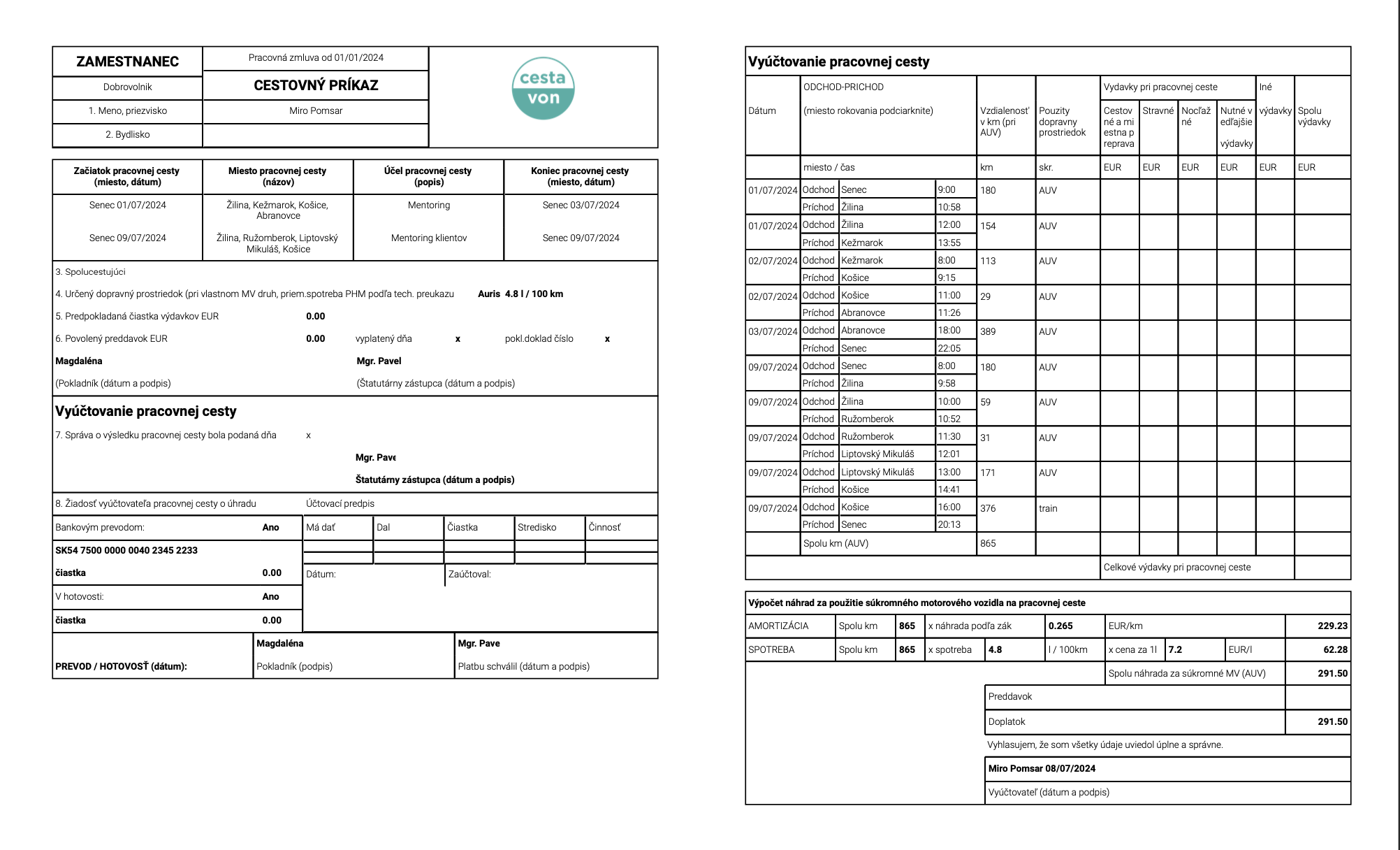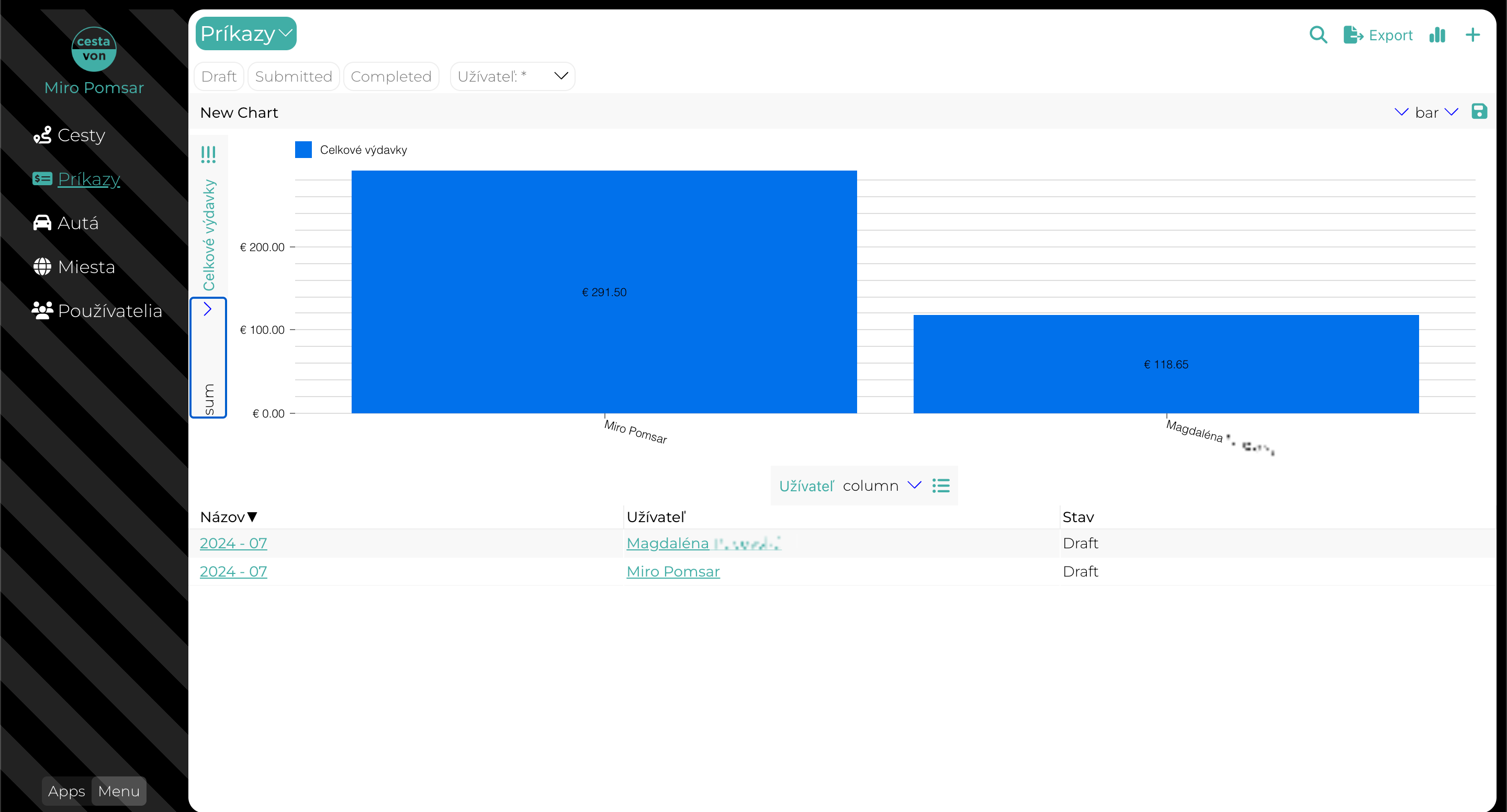Manage your expenses with Business Travel Log
 Miro
Miro
How best to start the holiday season? With a new project, of course!
Do you often go on business trips and find filling out travel expense forms or processing them tedious?
We have a solution for you.
Who are the users?
This application was created based on ideas from the people at Cesta von. Mentors and other employees visit communities where they help people find their way out of poverty. Since people in need cannot travel for advice—and often don't even know where to find help—Cesta von workers go to their communities. To use their time efficiently, one 'business' trip includes several meetings and often several towns/communities.
Since (social) workers often use their own cars for travel, the organization wants to reimburse them for travel expenses. And this is where things get complicated. The calculation itself isn't difficult, but it requires collecting information about all trips for the month, their segments, the average fuel price, and then putting it all into a formula.
Then there are the financial gals in the back-office, who have to double check the data, gather signatures, archive the documents and eventually transfer the funds.
To make the business-trip reporting a little easier on both the workers and the back-office employees, regular business trips are rolled into a montly allowance. The regularity of course has to be first monitored (for a couple of months).
Finally internal organization reports and tax office reports have to be generated and submitted regularly.
What are they using right now?
If Excel comes to mind, yes, this was the original solution. The advantage of Excel is that the formula is ready in a few minutes.
But then there are significant disadvantages:
Users must search for the distances traveled on the business trip.
They must correctly enter only the required information.
They must fill out Excel on a computer because, although Excel on a mobile phone works, it's more of a punishment.
They must correctly insert rows and not mess up the formulas.
They must correctly enter numbers and dates (decimal commas, slashes in dates, and other creative innovations).
Additional documents (e.g., travel tickets) cannot be "attached" to Excel.
A new file must be created for each month.
Combining data from multiple files is a manual, error-prone process.
User needs
So, to sum it all up, the new solution should:
Work on a mobile phone.
Maintain a travel database so that users can enter trips continuously and only check and send the summary at the end of the month.
Automatically calculate everything needed (distances between places, estimated travel durations, etc.).
Prevent incorrect information entry—only cities and towns in Slovakia, dates in a uniform format, etc.
Automatically generate a document in PDF format for the accounting department.
Maintain information about cars (technical documents).
Upload documents—travel tickets, fuel receipts, etc.
Allow the conversion of regular business trips into a travel allowance.
Have an easy way to generate aggregate statistics.
ds
Our App
Armed with a list of functionalities, we got to work. We focused primarily on:
Intuitiveness — The app is used only a few times a month, so we can't rely on users remembering a complicated procedure.
Automation — So that it's not necessary to ask for information we can get automatically.
Speed — The app must be usable on the go. During business trips, stops and documents can be added gradually—photographed directly on the phone.
Trip Module
The user creates a new business trip and gradually adds the places visited. The app automatically assumes that the trip starts and ends at the user's residence. The default start and end can, of course, be changed or don't have to be the same. With each added place, the distances are recalculated.
For each segment of the trip, it's possible to indicate whether the user's own vehicle or public transport—train, bus, etc.—was used. For each segment, it's also possible to select the departure time; the app will calculate arrivals on its own.
For each segment where the user used a train or bus, a snapshot of the travel ticket can be attached.

Report Module
The user simply selects the month (or closes the previous one).Enters the price at which they refueled (and attaches a photo of the receipt).Chooses whether they want reimbursement for expenses in their account or in cash.Everything else is calculated by the app—it remembers the user's current car and its consumption.
After review, the user marks the report as sent for processing. Subsequently, the report is processed by the cashier, and expenses are reimbursed.
The report module can be used by the cashier to calculate flat-rate allowances for regular business trips. Recurring business trips over the monitored period (4, or 2 months) are calculated as a flat rate for the user.

Currently, it's still necessary to print and sign the report. We are working on eliminating this last bit of bureaucracy ;)
Statistics & Dashboards
The managers and back-office accountants use the interactive charts to get a quick overview. Or to drill-down to inspect some particular discrepancies. Or to calculate financial aggregates.

Conclusion
The Business Travel Log app simplifies business trip expense management by automating data collection, calculating travel costs, and generating reports.
It is mobile-friendly, allowing users to log trips continuously, capture travel receipts, and upload documents directly from their phones.
Key benefits include ease of use, significant time savings, error reduction, and seamless integration with accounting processes. Managers and accountants can utilize interactive charts for quick overviews and detailed inspections.
Apps, where we can practically hear our users sighing in relief because the Excel frustration is finally over are our favorites.
Subscribe to my newsletter
Read articles from Miro directly inside your inbox. Subscribe to the newsletter, and don't miss out.
Written by
